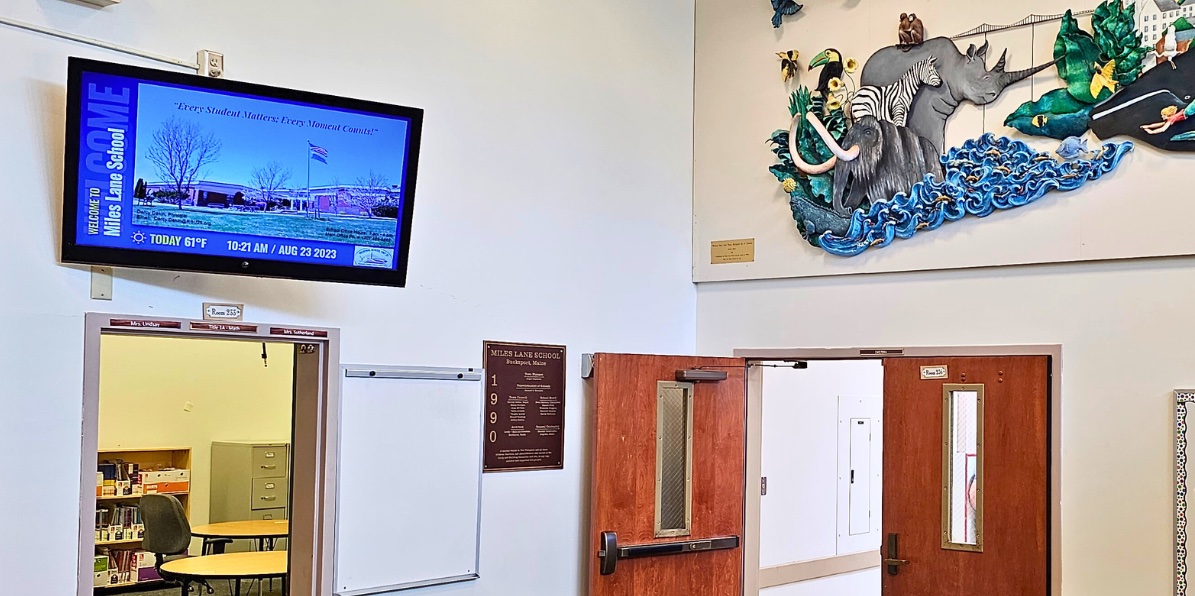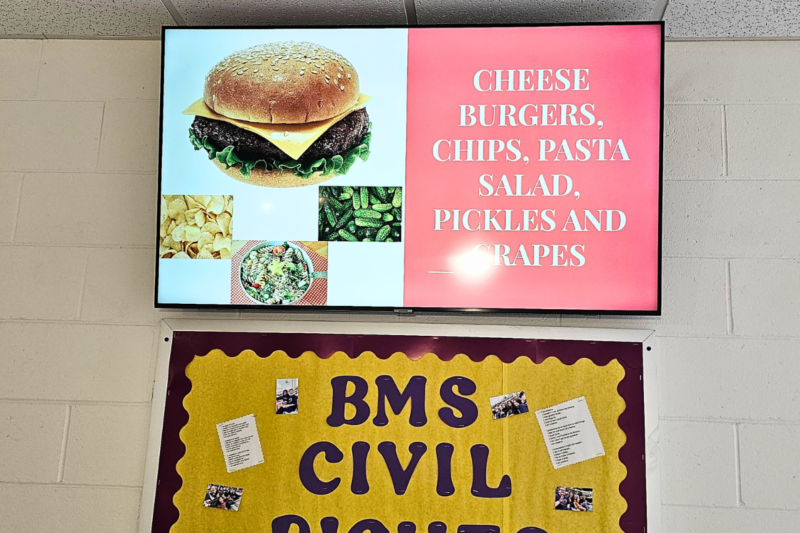
Tiny Maine School District MacGyvers Digital Signage Network With $20 PCs Rescued From Reyclers
November 7, 2023 by Dave Haynes
The CMS software firm Rise Vision has an interesting new case study out about a school district in Maine really pushing its tight budget and multi-tasking what gear it had to boost the effectiveness and impacts of digital signage communication in its schools.
Regional School Unit 25 (school names are evidently cooked up by no-nonsense engineers in Maine) has some 1,100 students in grades Pre-K-12 across four schools, just outside of Bangor.
At first glance, it is screens mounted off walls showing menus. Seen that a bunch, for a bunch of years.
But it’s the MacGyver-ing – making do with what’s on hand – that makes this interesting. The district’s technology director’s budget was so tight that a lot of CMS software options went off the table, because of the cost of the hardware required to run the player software.
“While other solutions had similar pricing to Rise Vision,” the study notes, “the necessary hardware costs associated with those solutions quickly added up. So, Rise Vision emerged as the optimal choice to streamline their communication strategy.”
With Rise Vision, Jim and Hunter (the school technologists) were able to run the digital signage software on any device. So that’s what they did. They bought MiniPCs with Linux from a recycler for $20 a unit and connected them to their existing TVs.
To mitigate security risks, Hunter runs an SSH networking protocol to the MiniPC devices from a dedicated desktop. The players aren’t able to accept SSH from any other input which means students aren’t able to potentially override the content.
No one would argue that used PCs is an optimal tactic, but a hat tip for making do.
The district also has 109 Promethean interactive boards in classrooms, which are now integrated with Rise Vision, so that they can be multi-tasked for communications:
“The district, RSU 25 now delivers regular morning announcements and plans to incorporate video announcements. The goal is to maintain a non-distracting display while ensuring critical Common Alert Protocols (CAP) alerts are visible even when the board is inactive.”
The other interesting insight out of this is the design of menus used on a screen in the high school cafeteria.
The use of imagery in the lunch menus helps define menu items for students with lower reading levels (either grade level or learning capability) as well as any exchange and immigrant students we have. Although it’s not often the district has immigrants or refugees that join without some knowledge of English, the school does have a student from South America this year that had no experience in English.




Leave a comment